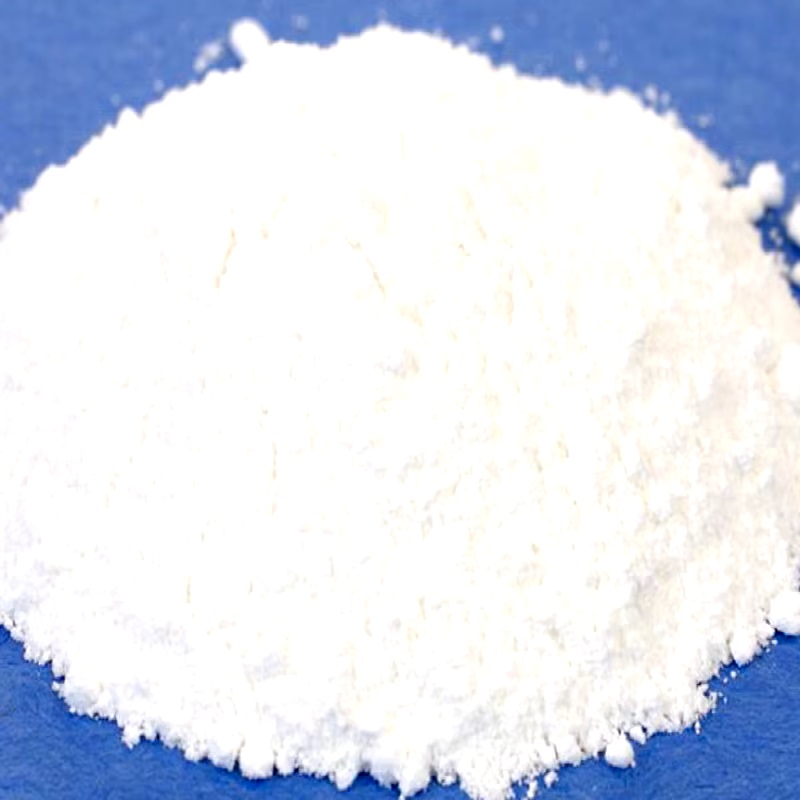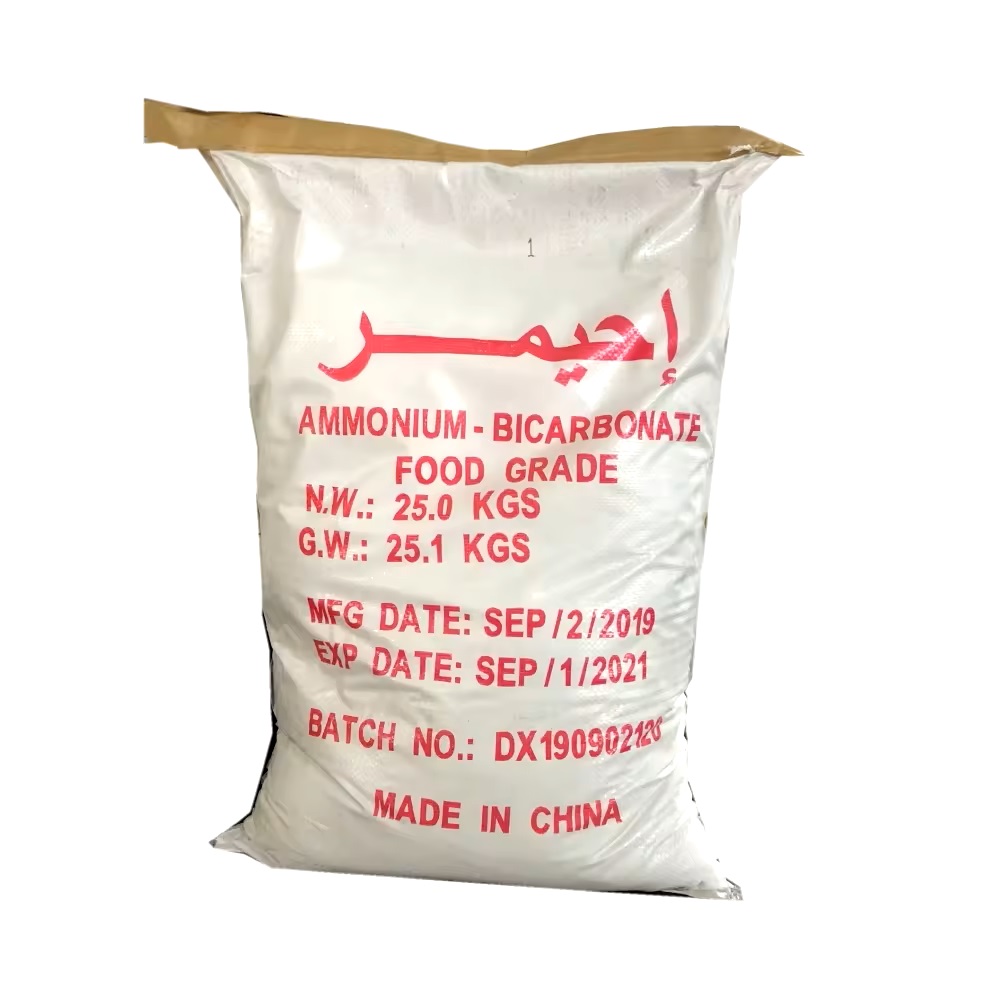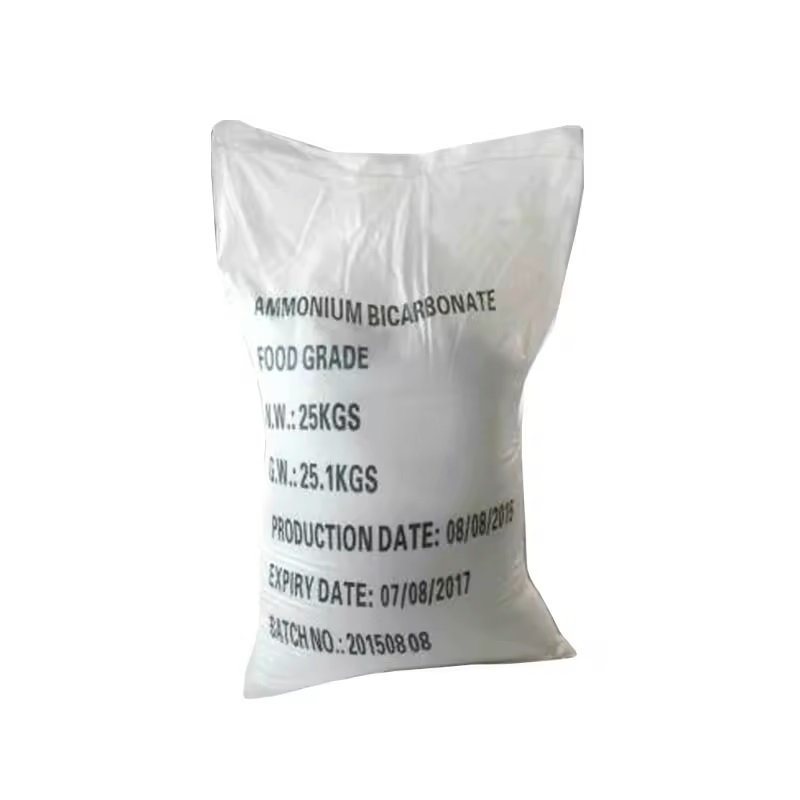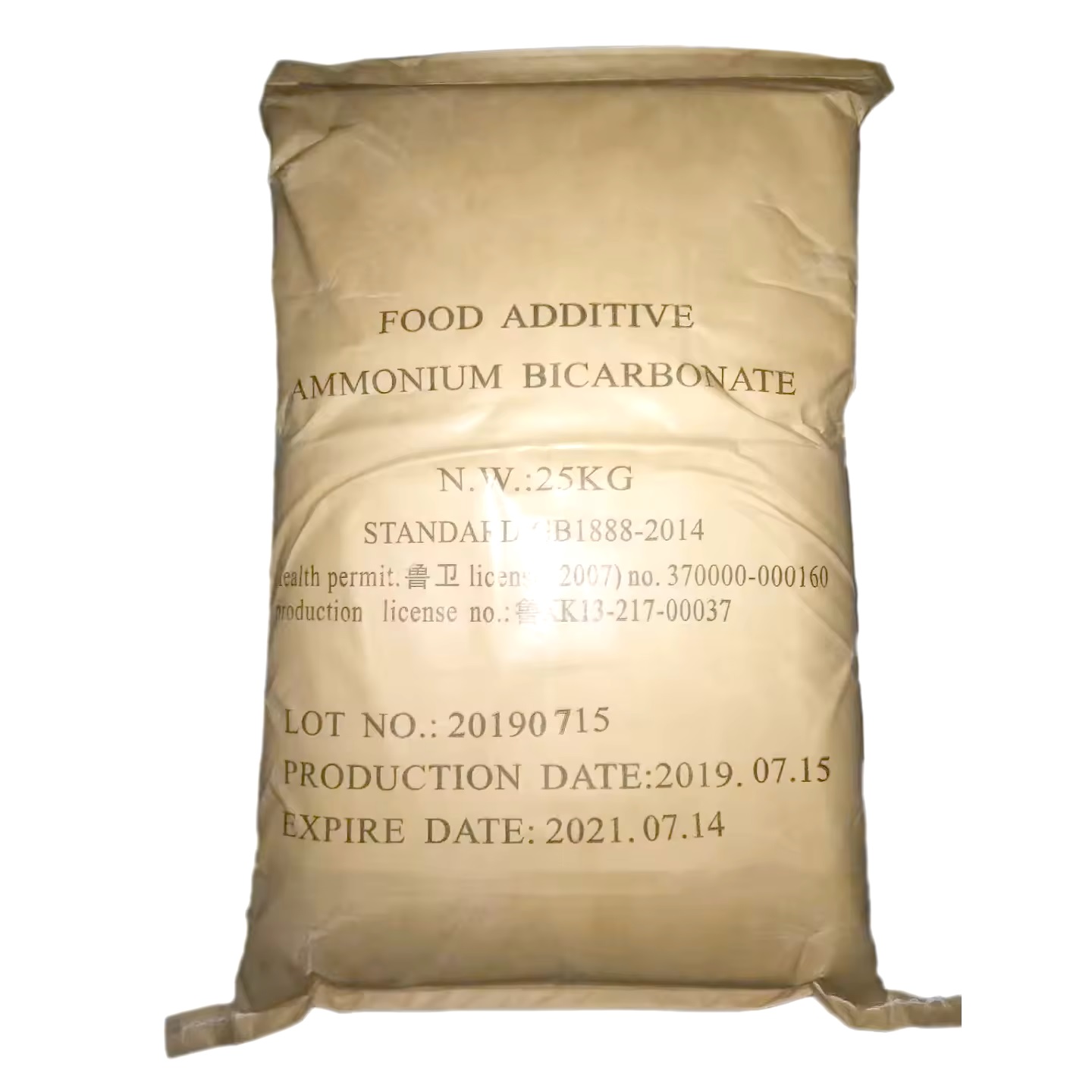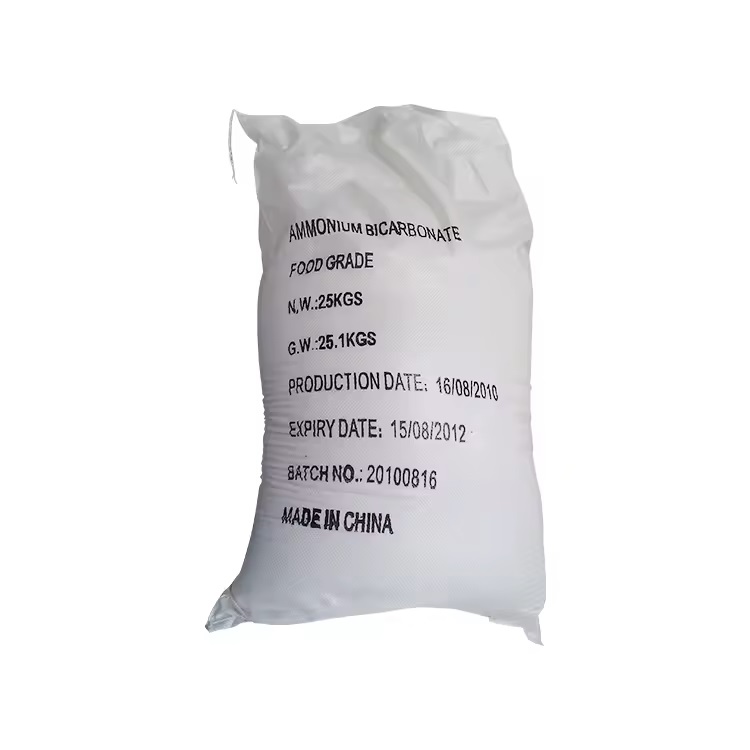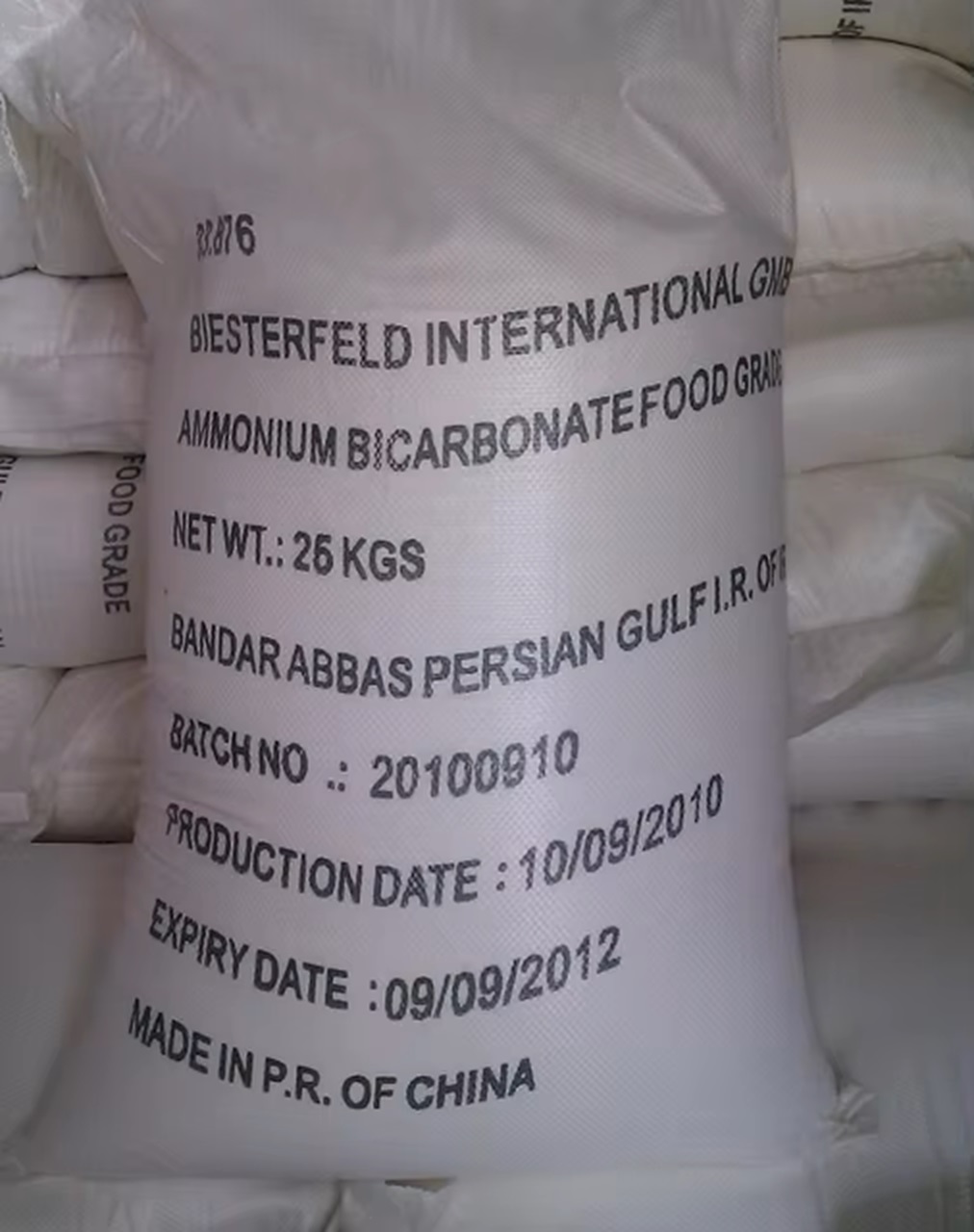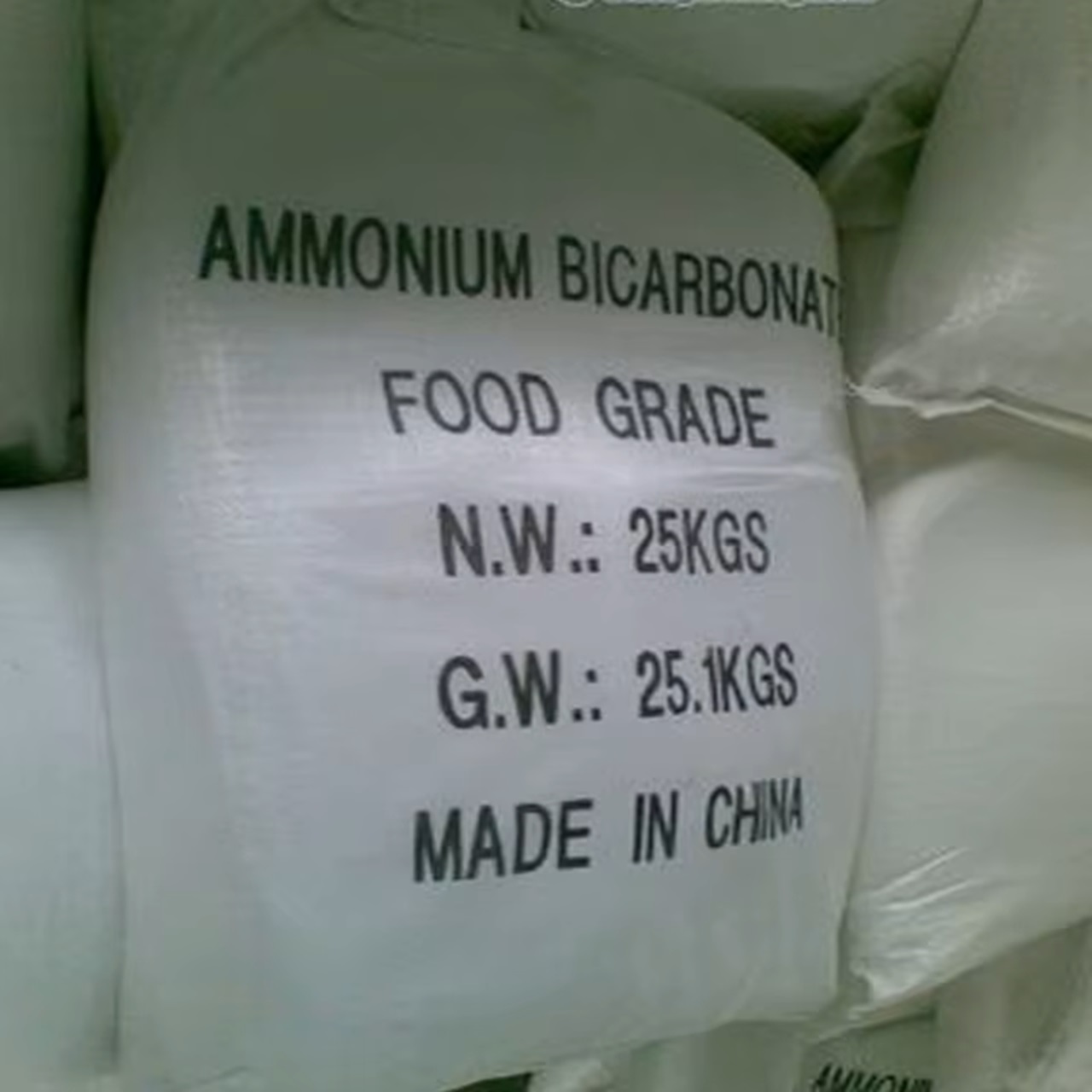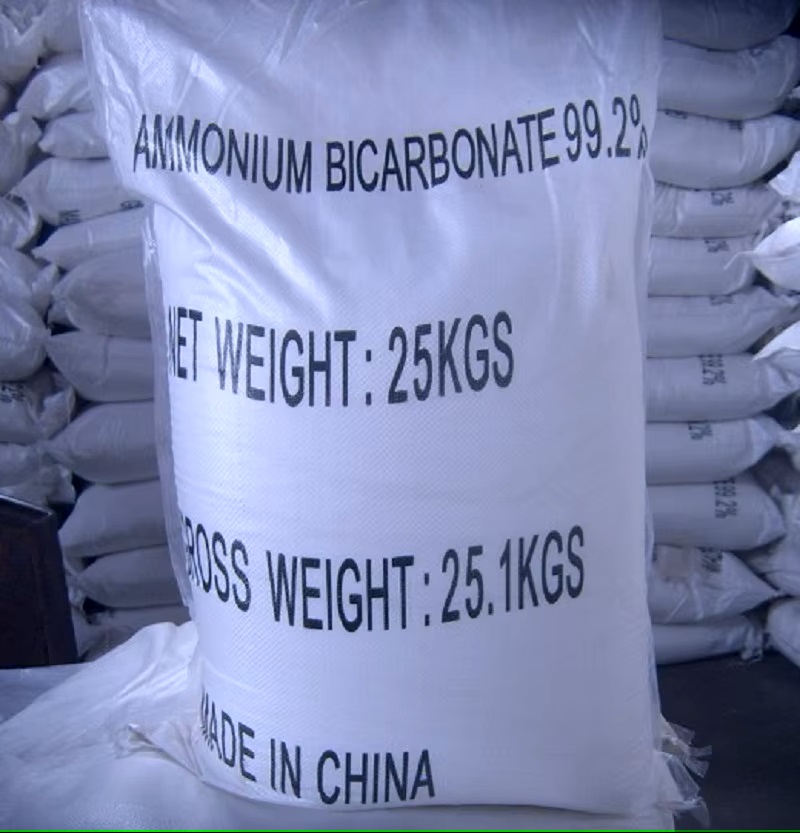We unleash your business potential by maximize the business innovation.
Send EmailE503, Ammonium Bicarbonate, Ammonium Hydrogen Carbonate, Baking Powder, 1066-33-7
Ammonium Hydrogencarbonate, also known as Ammonium Bicarbonate, is a chemical compound with the formula NH₄HCO₃. Here are some key points about it:
-
Chemical Formula: NH₄HCO₃
-
Molecular Weight: 79.056 g/mol
-
CAS Number: 1066-33-7
-
Appearance: White crystalline solid
-
Density: 1.586 g/cm³
-
Melting Point: 41.9 °C (decomposes before boiling)
-
Solubility: Highly soluble in water
Uses:
-
Food Industry: Used as a leavening agent in baked goods like crackers, cookies, and cream-puff doughs.
-
Ceramics and Plastics: Used in the production of ceramics and porous plastics.
-
Laboratory Reagent: Employed as a reagent in various chemical reactions and analyses.
-
Fertilizers: Added to compost heaps to accelerate decomposition and used as a fertilizer.
-
Pharmaceuticals: Used in pharmaceutical applications like lyophilization (freeze-drying) for producing injectable and oral dosage forms.
Molecular Formula (Ammonium Bicarbonate): NH4HCO3
Molecular Weight: 75.056 g/mol
Chemical Name: Ammonium Hydrogen Carbonate
CAS Number: 1066-33-7
A chemical substance found as a white crystalline solid with an ammoniacal odor. It is generally known as Ammonium Hydrogen Carbonate.
A chemical cleaning agent. One of its most important features is its ability to self-ferment. Therefore, it does not require leavening acid.
A slightly basic inorganic compound. It is a reagent widely used in industrial and laboratory research. It is a good reagent.
Ammonium Bicarbonate E Code; E 503
Other Names : 1066-33-7
- Monoammonium Carbonate
- Diammonium Carbonate
- Acid Ammonium Carbonate
- Carbonic Acid Hydrogen Ammonium Salt
- Ammonium Carbonate, Acidic
- Carbonic Acid Monoammonium Salt
- Food Grade Ammonium Bicarbonate
- Baking Powder
- Ammonia Bicarbonate
- Ammonium Acid Carbonate
Physical and Chemical Properties:
It is found in the form of white crystals or white powder. It has a characteristic ammonia odor.
Ammonium Bicarbonate (Ammonium Hydrogen Carbonate) is freely soluble in water as a solubility. It is insoluble in ethanol. It is soluble in glycerol. It is soluble in acetone.
Ammonium Hydrogen Carbonate has a solubility of 24.8 gr/100 gr Water at 25 ° C.
Its density is 1.58 gr/cm3.
It is stable at room temperature. It decomposes as the temperature increases.
Its melting point is 107 ° C.
The pH is around 7.8.
Areas of Use of Ammonium Bicarbonate:
It is used in the manufacture of baking powders. It is the most common area of use.
It is used as a leavening agent in the production of chocolate and confectionery.
It is used in the manufacture of insecticides. Ammonium Hydrogen Carbonate is used in cooling baths and fire extinguishers.
It is used in the manufacture of porous plastics.
For the production of tablets that have a porous structure and disperse quickly, a mixture of Ammonium Bicarbonate and Ammonium Carbonate is used together with microcrystalline cellulose, mannitol, sorbitol and Polyvinylprrolidone. The tablets produced in this way are heated to a certain temperature under vacuum. In this way, the tablets obtained have a hard structure as well as being porous. Therefore, they can be dispersed easily.
It is used with ammonia to strip and clean the paints on metals, and with an emulsifying agent such as hydroxypropyl cellulose in benzyl alcohol solvent. The paints on the metal are cleaned with the obtained solution.
It is used in the food sector to create an alkaline environment and provide carbon dioxide output in the production of cocoa powder.
In the electric bath and etching bath in ceramic production, ammonium bicarbonate is used together with fluorine compounds to obtain icy surfaces.
It is used in paint production.
It is used as a buffering salt to obtain ammonia in chrome leather tanning.
It is used as a nitrogen fertilizer. The reason for this is that it meets the nitrogen and carbon dioxide requirements that the plant needs for growth. The low nitrogen content facilitates agglomeration.
Ammonium Hydrogen Carbonate is used in the synthesis of fabric oil. It is also used as an analytical reagent.
It is used as a leavening agent in the production of crackers with low sodium content.
It can be used directly as a food release agent and swelling agent and as a ground fertilizer.
Ammonium Bicarbonate is used as a leavening agent in biscuits, cakes, bread and crepes when applied with sodium bicarbonate.
It can be used as the raw material of foam powder used in boiling bamboo shoots and green vegetables.
It is used in the production of snack cakes with high moisture content. It is used to create certain properties in porous bakery products.
It is used as a leavening agent, buffer and aeration agent in foods.
It is used as a buffer in applications such as lyophilization and matrix-assisted laser desorption. In addition, it is used in the mass spectrometric analysis of trypsin and proteins.
It is used in the production of ammonium compounds.
It creates more homogeneous pore sizes by increasing the pH of the dough used in waffle production. In this way, a softer texture and more voluminous waffle are obtained with the use of ammonium bicarbonate.
